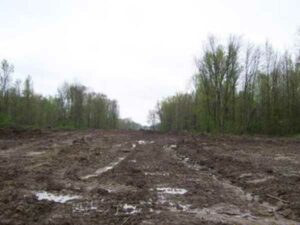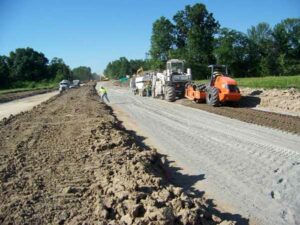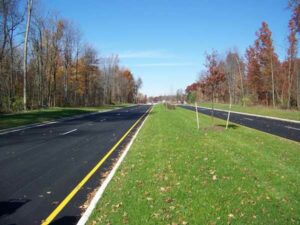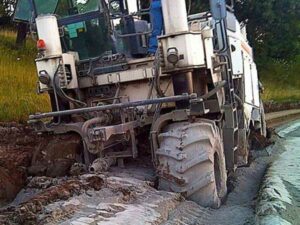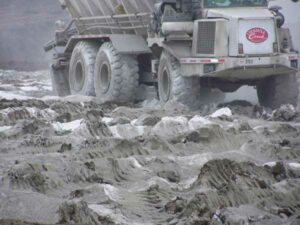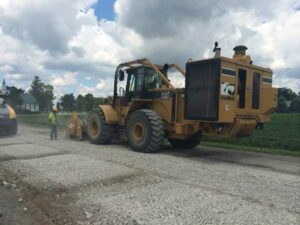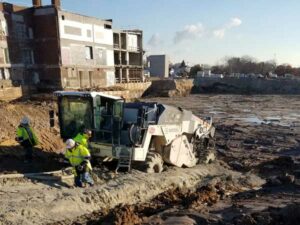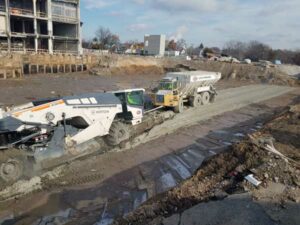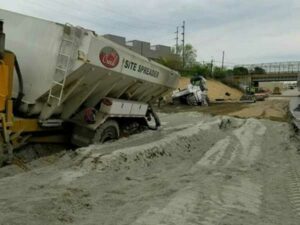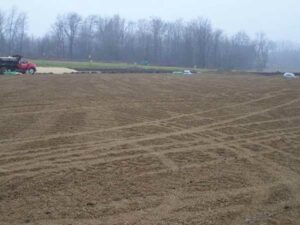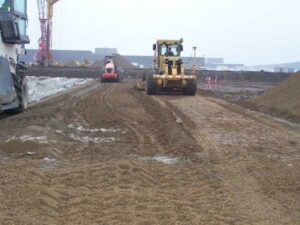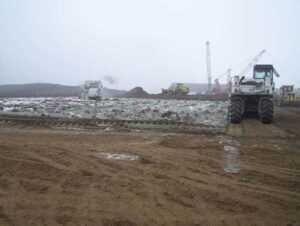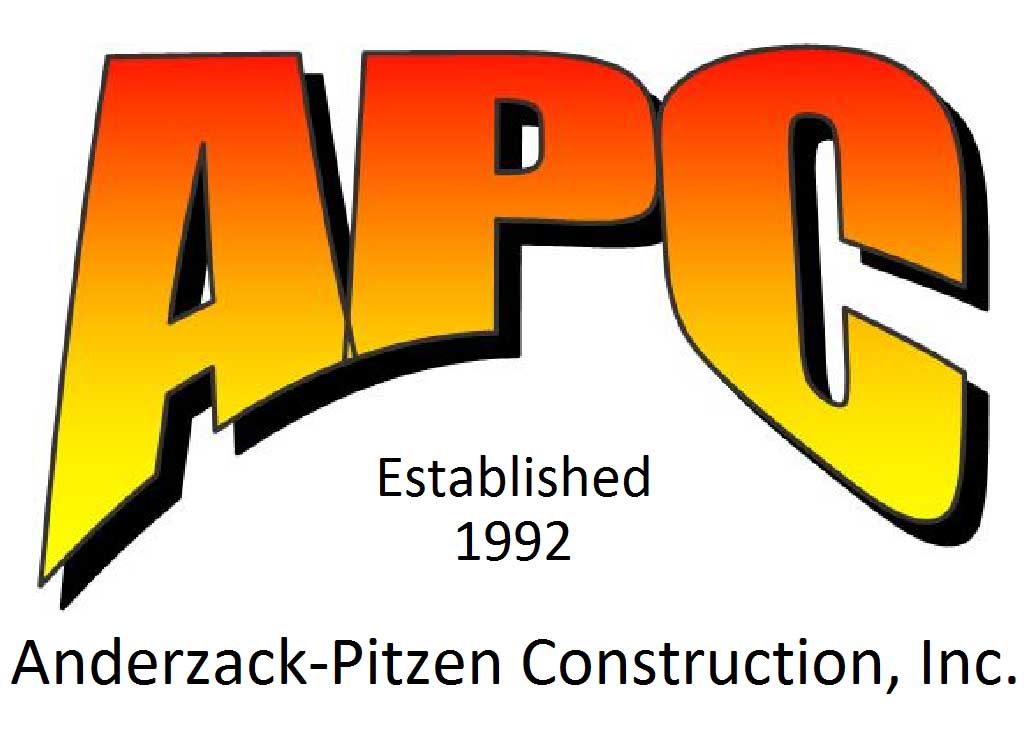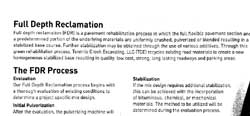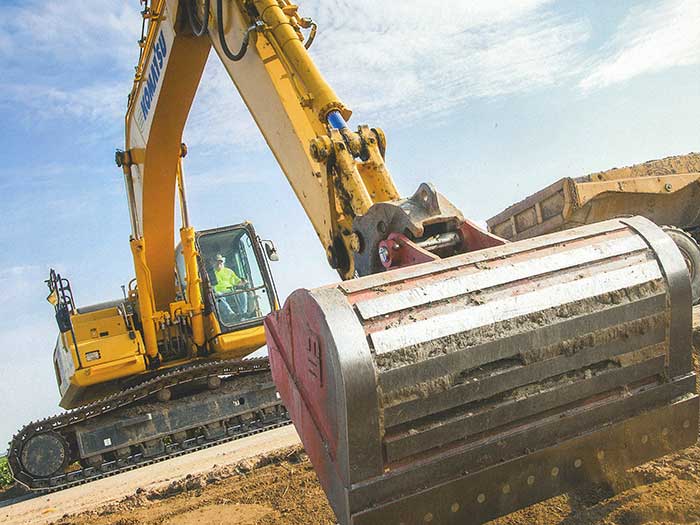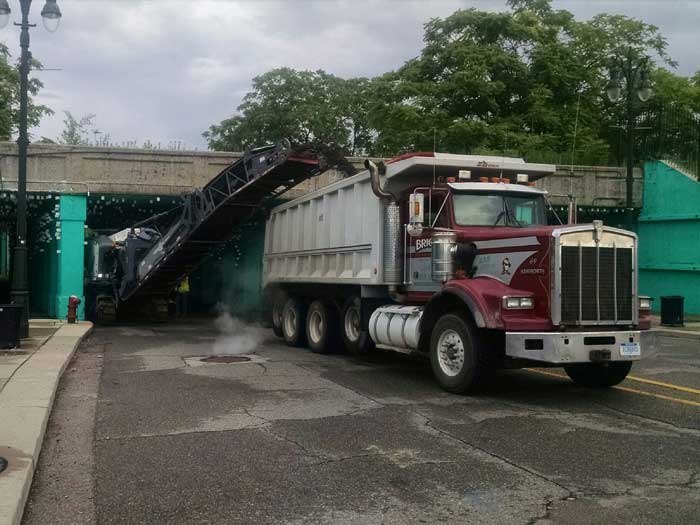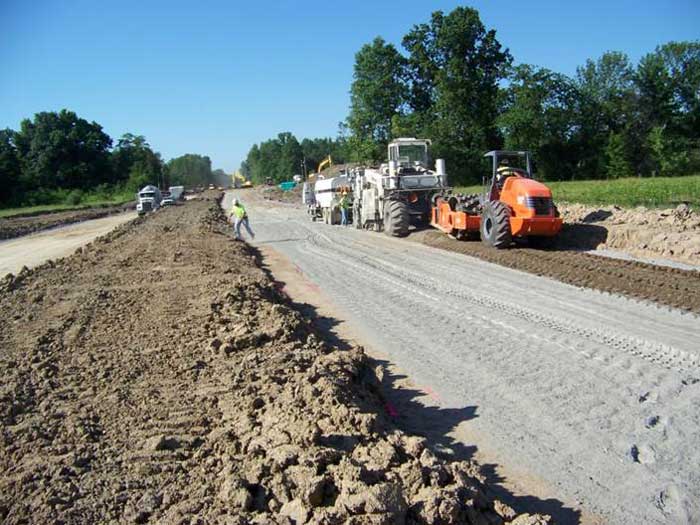Stabilization
Stabilization is the improvement of selected material engineering properties by the addition of additives so that the material can serve its function in the construction of the life of a pavement or building structure. It is a permanent change in the properties of the material.
Types of Stabilization:
- Bituminous - If the existing gravel or pavement cross-section is free of soil contamination, an emulsion additive can be blended in to stabilize the base. The emulsion creates a more flexible (fatigue resistant) base.
- Chemical - If the soil has a high moisture content, Portland cement, fly ash, etc. can be spread over the soil and then blended with the soil to condition it.
- Mechanical - This method is utilized when additional granular material is to be incorporated into the existing materials.
Stabilization Uses:
- Eliminate undercuts and the use of geofabrics. This typically saves money.
- Strengthen subgrades under roadways and building pads.
- Allowing access to construction sites by drying and stiffening subgrades; may allow you to compress your construction schedule while providing a more stable platform for construction to proceed.
Equipment List:
- Three WR250 Stabilizer/Reclaimers
- One WR2500 Stabilizer/Reclaimer
- One CMI 348 Stabilizer/Reclaimer (used for tighter areas)
- Five off-road spreader trucks
- Multiple smooth drum and padfoot rollers
- Water trucks
- Graders
- Bulk pneumatic tankers
Awards Won:
- 2011 City of Toledo Quality in Construction Award (California Blvd. Reconstruction Project)
- 2013 Roads & Bridges, ARRA Recycling Award - Full Depth Reclamation Project (2012 Toledo Roadway Reclamation)
- 2013 Road & Bridges ARRA Recycling Award - Full Depth Reclamation (Consumers Energy, Essexville Michigan)
